Student and Teacher Projects
Students and teachers in the 2015 Joint Science and Technology Institute took part in research projects in a variety of scientific disciplines.
Student Projects
- Microbes
- Computer Programming
- Raspberry Pi
- Math Modeling "Modeling Fearsome Things"
- 3D Printing
- Environmental Water Quality
- Robotics
Microbes
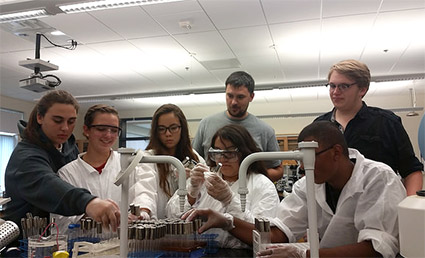 Microbes are prolific in the natural environments and are encountered in daily life constantly. A better understanding of how these microbes interact with each other, surfaces, and humans could lead to better control of disease spread from surfaces. Students will be exposed to standard microbiological techniques, including media preparation, bacterial growth and characterization, and DNA extraction and sequencing. Additionally students will be exposed to creation and characterization of anti-microbial materials through simple organic synthesis procedures.
Microbes are prolific in the natural environments and are encountered in daily life constantly. A better understanding of how these microbes interact with each other, surfaces, and humans could lead to better control of disease spread from surfaces. Students will be exposed to standard microbiological techniques, including media preparation, bacterial growth and characterization, and DNA extraction and sequencing. Additionally students will be exposed to creation and characterization of anti-microbial materials through simple organic synthesis procedures.
Agency: U.S. Naval Research Laboratory
Mentors: Preston Fulmer, Ph.D.
Computer Programming
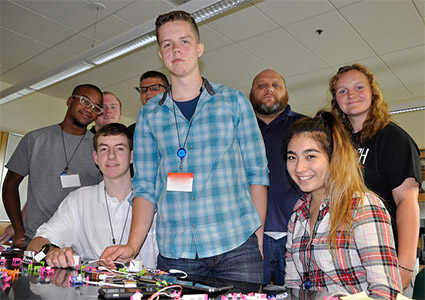 In the past ten years, there has been an exponential growth in emerging technologies. Students will take an in-depth look at electronics and computer programming using littleBits and Arduinos. Students will gain an understanding of many different concepts and build a foundation to layer technical skills in the future while also gaining hands-on experience in design, integrating and debugging hardware and software systems.
In the past ten years, there has been an exponential growth in emerging technologies. Students will take an in-depth look at electronics and computer programming using littleBits and Arduinos. Students will gain an understanding of many different concepts and build a foundation to layer technical skills in the future while also gaining hands-on experience in design, integrating and debugging hardware and software systems.
Agency: Defense Threat Reduction Agency
Mentor: Dale E. Taylor, Jr.
Raspberry Pi
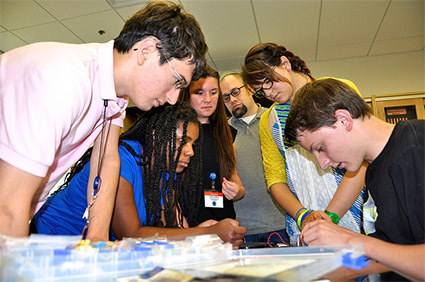 Students will use RaspberryPi to do physical computing. They will build their own computer, learn to program in a language of their choice, and interact with electronics they design. Students will focus on General Purpose Input and Output, in order to do projects they design and implement.
Students will use RaspberryPi to do physical computing. They will build their own computer, learn to program in a language of their choice, and interact with electronics they design. Students will focus on General Purpose Input and Output, in order to do projects they design and implement.
Agency: Defense Threat Reduction Agency and Naval Medical Research Center
Mentor: Joseph Anderson
Math Modeling “Modeling Fearsome Things”
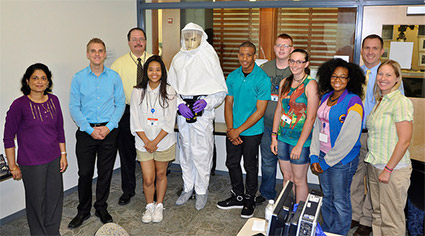 For this project, students are introduced to the math modeling used by Operations Research (OR) analysts when making predictions and assessments for Chemical, Biological, Radiological, and Nuclear (CBRN) hazards or incidents. Starting with the basics of probability and statistics, some toxicology modeling, and a simplified model for disease propagation we then use the downloadable game, Plague, Inc. (by Ndemic Creations), as a simulation to demonstrate how various pathogen parameters and countermeasures impact the worldwide spread of a contagion. Students are given a primer on how several real-world diseases behave then given the option to enhance their pathogen of choice to more fully infect the world. The second phase of this project introduces the math and science behind coordinate systems, navigation (including GPS), meteorology, and simplified atmospheric transport and dispersion of pollutants/hazards. We then use the Hazard Prediction and Assessment Capability (HPAC) simulation from the Defense Threat Reduction Agency (DTRA) to examine what might happen from various kinds of CBRN releases at locations near and dear to the students. Rounding out their experience are some introductions to various methods for individual protection from CBRN hazards, computing hardware, binary math, and tours of test facilities for aerosols and protective masks/filters.
For this project, students are introduced to the math modeling used by Operations Research (OR) analysts when making predictions and assessments for Chemical, Biological, Radiological, and Nuclear (CBRN) hazards or incidents. Starting with the basics of probability and statistics, some toxicology modeling, and a simplified model for disease propagation we then use the downloadable game, Plague, Inc. (by Ndemic Creations), as a simulation to demonstrate how various pathogen parameters and countermeasures impact the worldwide spread of a contagion. Students are given a primer on how several real-world diseases behave then given the option to enhance their pathogen of choice to more fully infect the world. The second phase of this project introduces the math and science behind coordinate systems, navigation (including GPS), meteorology, and simplified atmospheric transport and dispersion of pollutants/hazards. We then use the Hazard Prediction and Assessment Capability (HPAC) simulation from the Defense Threat Reduction Agency (DTRA) to examine what might happen from various kinds of CBRN releases at locations near and dear to the students. Rounding out their experience are some introductions to various methods for individual protection from CBRN hazards, computing hardware, binary math, and tours of test facilities for aerosols and protective masks/filters.
Agency: Edgewood Chemical Biological Center
Mentors: Michael Kierzewski, Doug Sommerville, Erin Shelly, Nirmala Pinto, Marta Shelton, Jayson Scott, Tom Ingersoll, Pam Humphreys
3D Printing
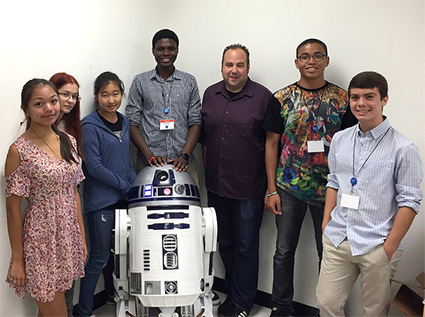 The challenge for the 3D printing group is to assemble and trouble-shoot 3D printers. Students will design objects using CAD software, program and print the 3D designs, and redesign, as needed. Participants will learn about additive manufacturing and research areas of 3D printing, such as printed parts for protective masks, holders for improvised explosive device detectors, medical prosthetics, printed batteries, antennas, fuse elements, wings for unmanned aircraft, and replacement parts in remote locations.
The challenge for the 3D printing group is to assemble and trouble-shoot 3D printers. Students will design objects using CAD software, program and print the 3D designs, and redesign, as needed. Participants will learn about additive manufacturing and research areas of 3D printing, such as printed parts for protective masks, holders for improvised explosive device detectors, medical prosthetics, printed batteries, antennas, fuse elements, wings for unmanned aircraft, and replacement parts in remote locations.
Agency: Edgewood Chemical Biological Center
Mentor: Lester Hitch, Brad Ruprecht
Environmental Water Quality
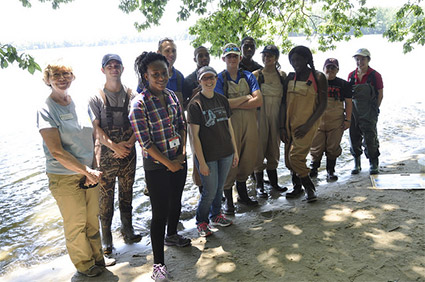 The Chesapeake Bay watershed includes the states of Pennsylvania, Maryland, Delaware and Virginia as well as the District of Columbia. Runoff from land, storm water, and wastewater treatment effluent contribute to the water in the stream and rivers which flow into the bay. Different chemicals impact the health of the bay and are monitored by the EPA and other organizations. Too much of any chemical can have a negative effect on the bay, causing the depletion of oxygen and the death of the fish and other organisms in the bay. Students well collect water samples from several locations in the Chesapeake Watershed and analyze them for nitrate, ammonia, phosphate, and bacteria. Based on the measurements, students will be able to piece together how human activity can impact the Bay’s ecosystem
The Chesapeake Bay watershed includes the states of Pennsylvania, Maryland, Delaware and Virginia as well as the District of Columbia. Runoff from land, storm water, and wastewater treatment effluent contribute to the water in the stream and rivers which flow into the bay. Different chemicals impact the health of the bay and are monitored by the EPA and other organizations. Too much of any chemical can have a negative effect on the bay, causing the depletion of oxygen and the death of the fish and other organisms in the bay. Students well collect water samples from several locations in the Chesapeake Watershed and analyze them for nitrate, ammonia, phosphate, and bacteria. Based on the measurements, students will be able to piece together how human activity can impact the Bay’s ecosystem
Agency: Defense Threat Reduction Agency
Mentor: Morgan Minyard, Ph.D.
Robotics
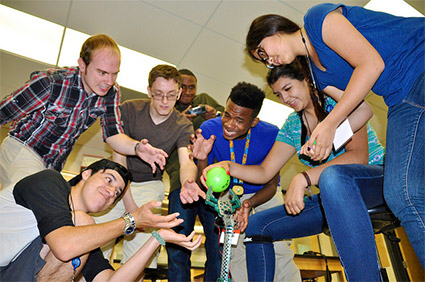 The field of robotics is growing by leaps and bounds: from movie props to performing delicate surgeries. As an introduction to robotics, students will explore the gambit of emerging trends and future applications in the industry including traditional uses like welding and high speed sortation through to drones and humanoids. Students will then get hands-on by designing, building, and programming robots to meet a goal. The basic engineering principles from mechanical design and assembly to algorithms and coding will also be covered.
The field of robotics is growing by leaps and bounds: from movie props to performing delicate surgeries. As an introduction to robotics, students will explore the gambit of emerging trends and future applications in the industry including traditional uses like welding and high speed sortation through to drones and humanoids. Students will then get hands-on by designing, building, and programming robots to meet a goal. The basic engineering principles from mechanical design and assembly to algorithms and coding will also be covered.
Agency: Purdue University Multi-disciplinary Engineering
Mentor: Michael Geuy
Teacher Projects
Quantum Mechanical Simulations
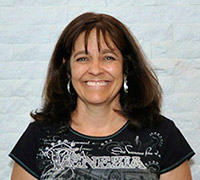 This project highlights the modeling of chemistry between environmental factors and chemical agents. The objective is to conduct research in order to obtain the capabilities to rapidly predict and determine how chemical agents will react when locally released. This process of modeling with relevant pharmaceuticals enables researchers to examine the chemistry performance and to identify chemistry patterns that can be applied to agent chemicals. This results will aid first responders in obtaining a rapid prediction of the agent’s behavior in the environment around populated areas or for those in the military field. The researcher will perform simple quantum mechanical calculations to get some simple quantum mechanical properties for a set of pesticides and traditional chemical agents and correlating those properties to the octanol/water partitioning coefficient (pKow).
This project highlights the modeling of chemistry between environmental factors and chemical agents. The objective is to conduct research in order to obtain the capabilities to rapidly predict and determine how chemical agents will react when locally released. This process of modeling with relevant pharmaceuticals enables researchers to examine the chemistry performance and to identify chemistry patterns that can be applied to agent chemicals. This results will aid first responders in obtaining a rapid prediction of the agent’s behavior in the environment around populated areas or for those in the military field. The researcher will perform simple quantum mechanical calculations to get some simple quantum mechanical properties for a set of pesticides and traditional chemical agents and correlating those properties to the octanol/water partitioning coefficient (pKow).
Agency: Edgewood Chemical Biological Center
Mentor: Jerry Cabalo, Ph.D.
Teacher: Janie Kimble
Respiratory System Models
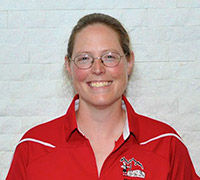 This project is to build the upper respiratory system of a monkey to conduct particle deposition studies. The goal of this project is to demonstrate that an anatomically correct animal respiratory system model can be constructed with high accuracy. Aerosol testing of the model will show the location of particle deposition for various particle sizes, and the results compared with actual animal test data to validate its accuracy Once the validity of the model can be established, it can then be utilized in actual tests and experiments relating to human and animal toxicology. With the use of replicate animal models, the location of particle deposition can be accurately determined without expensive and controversial animal tests and can be used without sacrificing scientific accuracy.
This project is to build the upper respiratory system of a monkey to conduct particle deposition studies. The goal of this project is to demonstrate that an anatomically correct animal respiratory system model can be constructed with high accuracy. Aerosol testing of the model will show the location of particle deposition for various particle sizes, and the results compared with actual animal test data to validate its accuracy Once the validity of the model can be established, it can then be utilized in actual tests and experiments relating to human and animal toxicology. With the use of replicate animal models, the location of particle deposition can be accurately determined without expensive and controversial animal tests and can be used without sacrificing scientific accuracy.
Agency: Edgewood Chemical Biological Center
Mentor: Jana Kesavan, Ph.D.
Teacher: Carol Ochsner
3D Printing
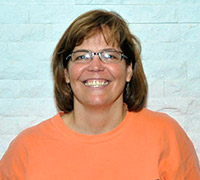 The challenge of this project is to assemble and trouble-shoot 3D printers. The teacher will design objects using CAD software, program and print the 3D designs, and redesign, as needed. The teacher will learn about additive manufacturing and research areas of 3D printing, such as printed parts for protective masks, holders for improvised explosive device detectors, medical prosthetics, printed batteries, antennas, fuse elements, wings for unmanned aircraft, and replacement parts in remote locations. The mentor will assist the teacher in developing innovative ways to incorporate this technology into the standards-based curriculum.
The challenge of this project is to assemble and trouble-shoot 3D printers. The teacher will design objects using CAD software, program and print the 3D designs, and redesign, as needed. The teacher will learn about additive manufacturing and research areas of 3D printing, such as printed parts for protective masks, holders for improvised explosive device detectors, medical prosthetics, printed batteries, antennas, fuse elements, wings for unmanned aircraft, and replacement parts in remote locations. The mentor will assist the teacher in developing innovative ways to incorporate this technology into the standards-based curriculum.
Agency: Edgewood Chemical Biological Center
Mentors: Brad Ruprecht
Teacher: Terri Reeves
Microbiological Assays
 This project is to learn and perform microbiological assays critical for detection and characterization
of pathogens relevant for biodefense including PCR, optical mapping, and various methods for pathogen
identification. In addition, there will be an overview of other areas important for biodefense including
sampling and decontamination and field detection by first responders.
This project is to learn and perform microbiological assays critical for detection and characterization
of pathogens relevant for biodefense including PCR, optical mapping, and various methods for pathogen
identification. In addition, there will be an overview of other areas important for biodefense including
sampling and decontamination and field detection by first responders.
Agency: Edgewood Chemical Biological Center
Mentors: Kristen Willis, Ph.D.
Teacher: Kristen Lindstrom



